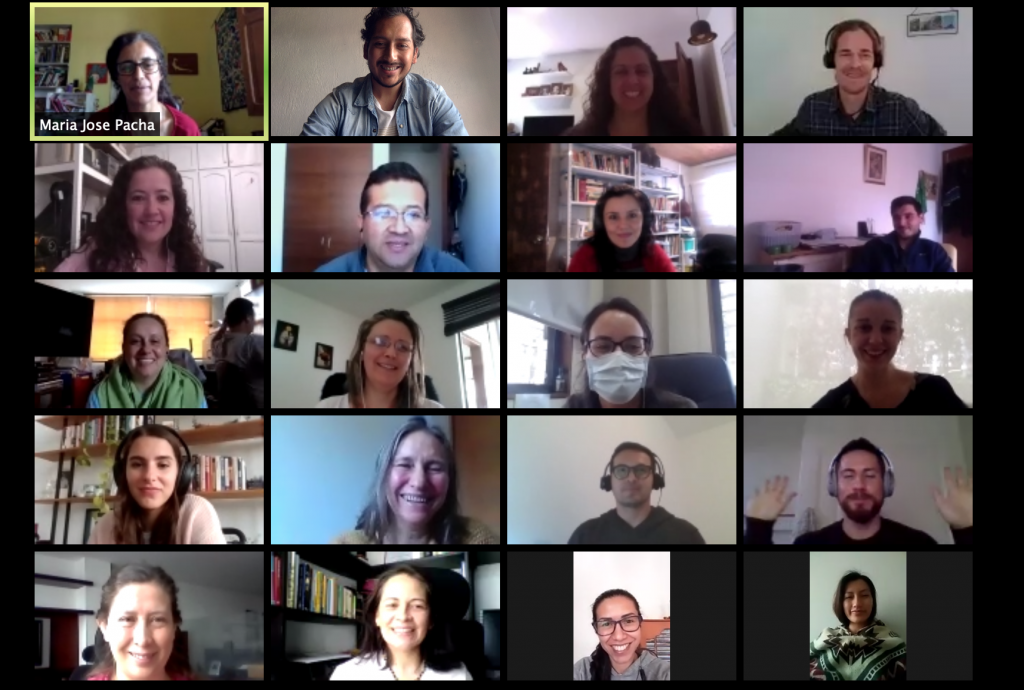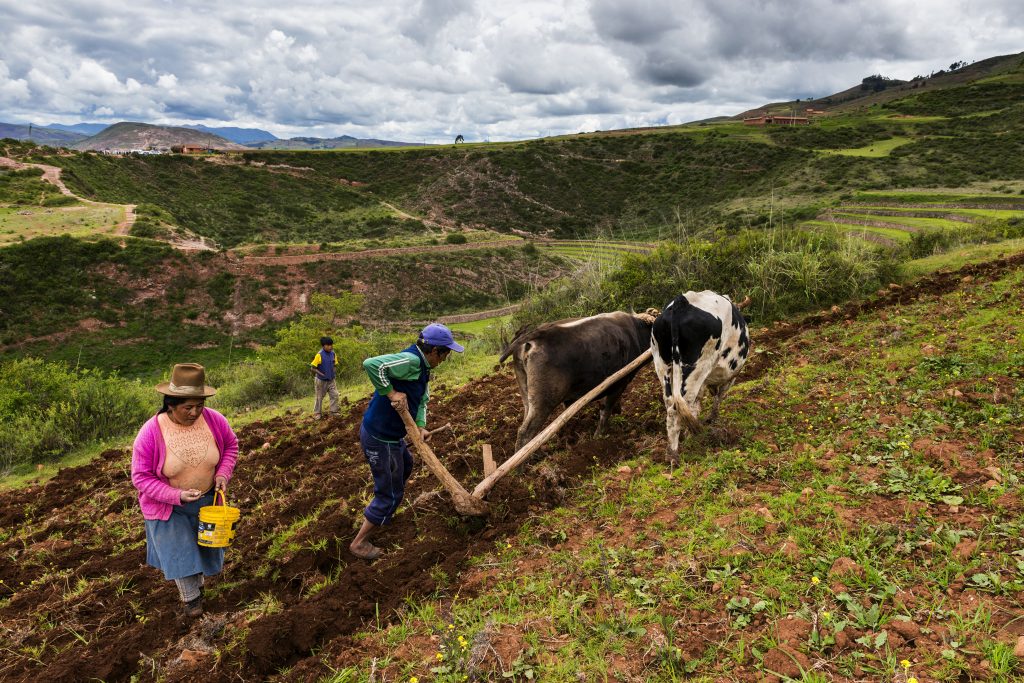This article originally appeared on the Climate and Development Knowledge Network (CDKN) website.
Versión en español a continuación.
On September 30, 2020, the first Exchange of Experiences and Dialogue on the Preparation and Implementation of National Adaptation Plans of Latin American countries took place, where 22 representatives from eight Latin American countries participated to learn more from the climate change adaptation experiences of others. Daniel Morchain from IISD and María José Pacha from CDKN report back from the event.

The polarity between adaptation and mitigation efforts
The field of adaptation— which aims to reduce the negative impacts of climate change on people and systems and identify opportunities under these new and changing circumstances—lacks a simple mandate that the field of mitigation has had for decades: reduce greenhouse gas emissions by x amount in y sectors in z years. Reaching mitigation goals is not easier, but it is clearer.
When simplified for the sake of monitoring its progress, adaptation efforts struggle to accurately represent their ambition to address a key, non-quantifiable variable: people’s well-being.
This polarity between adaptation and mitigation efforts makes the job of government officials working on adaptation around the world quite difficult, as they reasonably struggle to quantitatively justify the efficiency of their proposed investments.
It is essential, then, to be able to promote spaces for sharing experiences to identify what works and what does not in adaptation efforts.
What works and what doesn’t in adaptation efforts?

Aware that the planning and implementation of National Adaptation Plans (NAPs) is an important process used by several countries, the Fundacion Futuro Latinoamericano (FFLA), the Climate and Development Knowledge Network (CDKN), and the NAP Global Network, whose Secretariat is hosted by the International Institute for Sustainable Development (IISD), are working together to support governments in strengthening their capacities and provide a virtual space for the exchange of experiences and dialogue on NAP processes in Latin American countries.
To better understand the interests and needs of various Latin American governments regarding their NAP process, a survey was first sent to the invited government representatives. From those results, the exchange and dialogue process was designed to be held in three virtual sessions on the following topics: (1) multi-level governance (vertical) integration of NAP processes, (2) monitoring and evaluation of NAPs, and (3) climate risk analysis tools, including the new Intergovernmental Panel on Climate Change models and projections.
This series began on September 30, 2020, as 22 representatives from eight countries (Argentina, Brazil, Chile, Colombia, Costa Rica, Ecuador, Paraguay, and Peru) participated in the first exchange on vertical integration. Daniel Morchain from IISD started with a presentation on the subject, followed by Maritza Jadrijevic Girardi, Head of Adaptation and Capacity Building for the Climate Change Division of the Ministry of the Environment of Chile, who commented on how Chile is addressing this issue. Next, the floor opened for a wider discussion, which consisted of a rich exchange on the challenges and lessons learned from countries’ experiences on the multi-level integration of adaptation actions.
Some of the challenges identified were: (a) achieving inter- and intra-institutional coordination and aligning different sectoral needs; (b) ensuring the establishment of links between the country’s Nationally Determined Contributions (NDCs) and its NAP process, and including adaptation goals and actions in local and national development planning tools; and (c) enhancing the scientific inputs for adaptation decision-making and risk analyses.
Furthermore, lessons learned from each country were explored. For example, representatives from Colombia highlighted the importance of engaging the private sector and using the financial sector as an enabling agent for NAP implementation. The latter has leveraged the development of strategies to generate new risk management plans and products. On the other hand, colleagues from Peru indicated that binding mechanisms that promote the vertical integration of NAPs should be put in place. This would require an enabling environment for institutional arrangements, budgeting tools, information management, and the monitoring of climate risks.
The complexity that characterizes adaptation is a factor that has slowed the transition from adaptation planning to action. One government representative, for example, spoke about how it took her country eight years to reach the implementation phase of its national adaptation strategy. As her country faces rapid environmental deterioration and social urgency, these political timelines are unsustainable and hinder both adaptation and development efforts.
Near the end of October 2020, a second virtual exchange with Latin American countries will be held on the NAP Monitoring and Evaluation process.
Support for these events are delivered via the NAP Global Network’s South-South Peer Exchange Program.
NOTICIA: Comprender y actuar sobre la adaptación climática en América Latina
El 30 de septiembre se realizó el primer Intercambio de experiencias y diálogo en torno a la elaboración e implementación de Planes Nacionales de Adaptación de países de América Latina donde participaron 22 representantes de 8 países de América Latina para conocer más sobre las experiencias de adaptación. Daniel Morchain de IISD y María José Pacha de CDKN reportan.

La polaridad entre los esfuerzos de adaptación y mitigación
El campo de la ‘adaptación’ -reducir los impactos negativos del cambio climático en las personas y los sistemas e identificar oportunidades bajo estas circunstancias nuevas y cambiantes – carece de un mandato simple que ha tenido el campo de la ‘mitigación’ durante décadas: reducir las emisiones de gases de efecto invernadero en un x% en los sectores y en un año z. No es que la tarea de mitigación sea fácil; no lo es, pero es más clara.
Los esfuerzos de adaptación, cuando se simplifican, no representan fielmente su ambición y fundamentalmente, están destinados a abordar una variable no cuantificable: el bienestar de las personas.
Esta polaridad entre los esfuerzos de adaptación y mitigación hace que la labor de los funcionarios y funcionarias gubernamentales que trabajan en la adaptación, en todo el mundo, sea bastante difícil, ya que luchan razonablemente para justificar cuantitativamente la eficiencia de sus inversiones propuestas.
Es esencial entonces, poder promover espacios de intercambio para poder identificar qué funciona y qué no en los esfuerzos de adaptación.
¿Qué funciona y qué no en los esfuerzos de adaptación?

Conocedores de la relevancia que adquiere en los países el proceso de elaboración e implementación de planes nacionales de adaptación al cambio climático (PNAD), la Fundación Futuro Latinoamericano (FFLA), la Alianza Clima y Desarrollo (CDKN) y el Red Global del PNAD – cuya Secretaría está a cargo del Instituto Internacional para el Desarrollo Sostenible (IISD) – han emprendido un proceso para apoyar a los gobiernos a fortalecer sus capacidades y propiciar un espacio de intercambio y diálogo de experiencias en torno a la elaboración e implementación de planes nacionales de adaptación entre países de América Latina.
Para conocer mejor las necesidades de los representantes gubernamentales de diversos países respecto a sus procesos e intereses sobre PNAD, se realizó primero una encuesta, a partir de la cual, se diseñó el proceso de intercambio y diálogo que se realizará en tres sesiones virtuales que girarán en torno a las siguientes temáticas: (1) Integración multinivel (vertical) en procesos de PNAD, (2) Monitoreo y evaluación de los PNAD y (3) Herramientas de análisis de riesgo climático con los nuevos modelos y proyecciones del IPCC (AR6).
El 30 de septiembre arrancó este proceso, en el que 22 representantes de 8 países de la región (Argentina, Brasil, Chile, Colombia, Costa Rica, Ecuador, Paraguay, Perú) participaron del primer intercambio sobre integración vertical. En primer lugar, Daniel Morchain del IISD, realizó una exposición del tema y luego Maritza Jadrijevic Girardi, Encargada del Área de Adaptación y Generación de Capacidades de la Oficina de Cambio Climático del Ministerio del Medio Ambiente de Chile, comentó cómo Chile está abordando esta temática. A continuación, se realizó un conversatorio, que constituyó un rico espacio de intercambio para identificar los desafíos y las lecciones aprendidas que han experimentado los países para avanzar hacia la integración multinivel en las acciones de adaptación.
Algunos de los desafíos identificados son: (a) Lograr coordinación inter e intra institucional y alinear las diferentes necesidades sectoriales. (b) Asegurar el vínculo entre las NDC con los Planes de Adaptación y cómo realmente reflejar las metas o acciones de adaptación en los instrumentos locales y nacionales de desarrollo. (c) Lograr un mayor nivel de detalle en la información científica para alimentar los planes de adaptación y robustecer los análisis de riesgo.
Por otra parte, se exploraron las lecciones aprendidas de cada país. Por ejemplo, representantes de Colombia resaltaron la importancia de involucrar al sector privado y contar con el sector financiero como un agente facilitador de la implementación. Este sector ha apalancado el desarrollo de estrategias para generar nuevos planes y productos encaminados a la gestión del riesgo. Por otra parte, colegas de Perú indicaron que se deben promover mecanismos vinculantes para la articulación vertical de los PNAD, lo que implica propiciar condiciones habilitantes como: arreglos institucionales, articulación con instrumentos que puedan ayudar a conseguir presupuesto, gestión de información y evidencias sobre riesgos climáticos.
La complejidad que caracteriza a la adaptación ha contribuido a frenar la transición de planificación a acción. La representante de un gobierno, por ejemplo, habló de que su país ha necesitado ocho años para alcanzar la fase de implementación de la estrategia nacional de adaptación. En un entorno de rápido deterioro y urgencia ambiental y social, estos plazos políticos son insostenibles y ponen trabas a los esfuerzos de adaptación y de desarrollo en general.
A finales de octubre desarrollaremos el segundo intercambio sobre el proceso de Monitoreo y Evaluación de los PNAD.